
Bee Removal in Herty, TX
Safe bee removal solutions in Herty, TX. Spot On Pest Control, LLC relocates bees with care. Protect family and pets. Call now for expert removal!

Bee Removal in Herty, TX
Living in Herty, TX means sharing the landscape with abundant flowering plants, oaks, and the East Texas climate that encourages active pollinators. When bees move into a home, wall void, shed, or attic, the situation can be stressful and potentially dangerous for people with allergies.
At Spot On Pest Control, LLC., we specialize in safe bee removal and relocation versus extermination options. Our services include hive and risk assessments, humane removal techniques, targeted treatments, safety protocols, proper licensing, emergency response options, and pollinator-friendly alternatives designed for Herty homes.
Why prompt, informed bee removal matters in Herty, TX
Bees are essential pollinators that support gardens, orchards, and native plants common to East Texas. However, a colony inside a structure can cause structural damage, attract pests, and pose stinging risks—especially if bees become defensive. In Herty’s warm climate, colonies can quickly thrive in wall voids, attics, sheds, and hollow trees. Prompt bee removal from Spot On Pest Control, LLC. helps reduce damage and increases the chances of safe relocation.
Common bee removal issues in Herty, TX
- Swarms on porch columns, trees, or mailboxes during spring and summer.
- Established hives inside wall cavities, attics, or crawlspaces causing buzzing noises and honey or wax buildup.
- Bees entering through roof vents, soffits, or gaps around windows and doors.
- Aggressive behavior or repeated stinging incidents near high-traffic areas.
- Secondary pest problems like wax moths, ants, or rodents attracted to abandoned comb.

Technician assessment and risk evaluation
Whenever possible, Spot On Pest Control, LLC. prioritizes relocation over extermination to protect pollinators.
- Visual inspection from outside to locate entrances or swarm clusters and to estimate colony size and activity level.
- Interior inspection where safe to identify wall voids, attic comb, or structural compromise. Infrared or borescope tools may be used to see inside without large demolition.
- Identification of species where possible. Knowing whether bees are honey bees, bumble bees, or other native species affects removal options.
- Risk evaluation considering proximity to living spaces, presence of small children or people with allergies, and whether the bees are defensive or in a swarm state.
- Discussion of relocation versus removal or targeted treatment based on assessment results and structures involved.
Humane removal techniques and targeted treatments
When feasible, relocation of honey bee colonies preserves pollinators and is the preferred option. Common humane methods include:
- Swarm capture: For cluster or swarm events, technicians use swarm boxes or nets to capture the colony intact and transfer to a temporary hive.
- Live cutout and transfer: For accessible comb in attics or sheds, the comb and bees can be removed and transferred into brood boxes or nucs for transport to a beekeeper.
- Bee vacuums and gentle containment: Specialized low-pressure vacuums collect bees without harming them for relocation.
- Structural comb removal with repair plan: In situations where comb is behind material, technicians carefully remove comb, extract honey and wax to prevent pests, and recommend repairs to seal reentry points.
Targeted treatments or containment are considered when relocation is not possible:
- Minimal, targeted pesticide use applied directly to colony areas by certified technicians to limit collateral impact on other pollinators.
- Wall sealing and exclusion after removal to prevent recolonization.
- Ongoing monitoring to confirm colony removal and to treat any residual pests or wax infestations.
Safety protocols for customers during removal
Technicians follow strict safety protocols, and residents should follow these guidelines for their protection:
- Keep children and pets indoors and away from the work area until technicians have completed the operation.
- Avoid attempting DIY removal or using over-the-counter sprays, which can provoke defensive swarms and push bees deeper into walls.
- Secure windows and doors near the removal site to prevent bees from entering living spaces.
- Inform technicians of any known allergies; if anyone experiences an allergic reaction, seek medical attention immediately.
- Follow technician instructions about reentry times after smoke, treatments, or structural work to ensure safety.
Licensing, certifications, and professional standards
Our qualified technicians in Texas typically have:
- State pesticide applicator certification or structural pest control licensing where treatments are involved. These credentials ensure training in safe pesticide use and legal compliance.
- Training in bee biology and removal techniques, often through beekeeper associations, entomology courses, or accredited bee removal programs.
- Use of industry-standard protective equipment and tools, such as full-body suits, bee vacuums, and inspection cameras.
When evaluating service options, confirm a technician’s relevant certifications and experience with live removals and structural work.
Emergency removal options in Herty
Emergency removals are necessary when a colony poses an immediate threat to safety—examples include bees inside bedrooms, near sleeping children, or aggressive swarms in high-traffic areas. Emergency response typically involves:
- Rapid assessment to determine urgency and best approach.
- Containment procedures to reduce bee movement and human contact.
- Nighttime removal for certain situations when bees are less active and easier to contain.
- Temporary exclusion measures until a permanent repair or relocation can be completed.
Our emergency services at Spot On Pest Control, LLC. always prioritize human safety first, while still seeking pollinator-friendly solutions whenever possible.
Pollinator-friendly alternatives and prevention tips
Preserving pollinators while protecting your home is achievable with thoughtful alternatives and maintenance plan:
- Prioritize relocation of honey bee colonies to licensed beekeepers whenever feasible.
- After removal, seal and repair entry points such as soffits, eaves, vents, and gaps around pipes to prevent future occupation.
- Use integrated pest management practices that minimize broad pesticide use and protect beneficial insects.
- Encourage pollinators away from the home by planting pollinator gardens at the property perimeter and providing water sources away from entry points.
- Regularly inspect attics, sheds, and outbuildings in spring and fall when bees are most likely to swarm or establish new colonies.
Benefits of professional, humane bee removal
Choosing our professionals who evaluate risks, prioritizes relocation when possible, and follows safety and licensing standards protects your household and supports pollinator populations. Proper removal prevents structural damage, reduces the chance of repeated infestations, and ensures bees are handled in a way that balances human safety with environmental responsibility. For Herty residents, these practices also acknowledge local climate patterns that encourage bee activity and help maintain healthy pollinator communities in the region.
Safe Bee Removal in Herty, TX
Don’t let a bee colony put your home and family at risk. At Spot On Pest Control, LLC., we provide professional, humane, and safe bee removal services in Herty, TX. Call us today to schedule your inspection or request emergency bee removal. Protect your home while preserving pollinators with Spot On Pest Control, LLC.!
Our Services
Our pest control services cover ants, termites, bed bugs, rodents, mosquitoes, and other common pests, with customized solutions for both residential and commercial properties.
.png)






